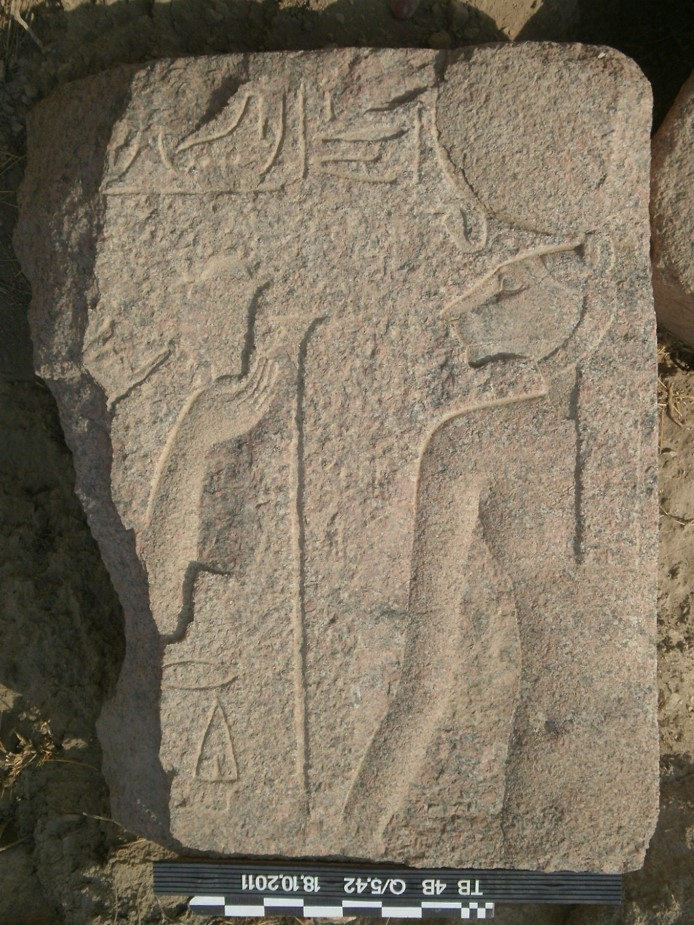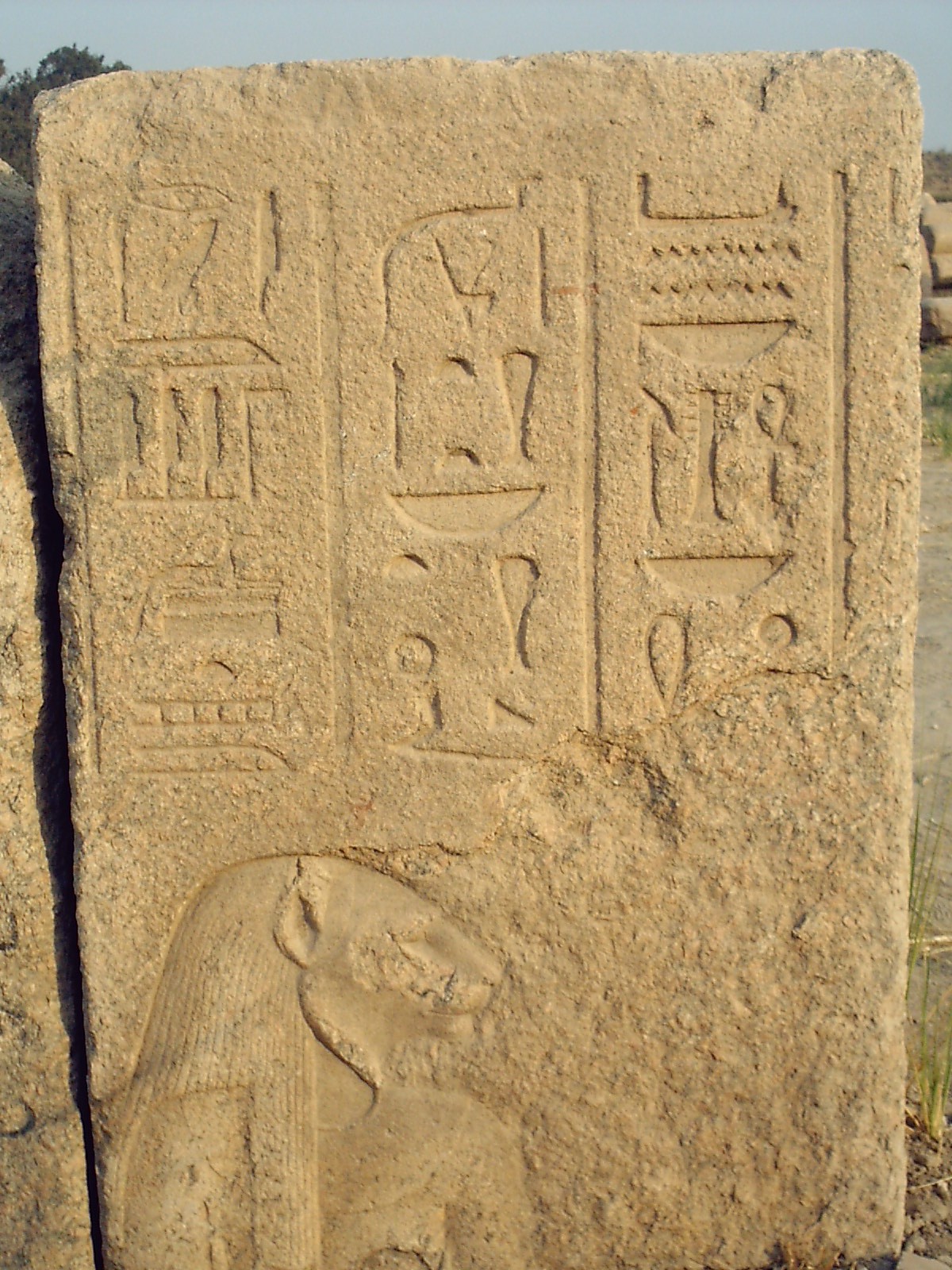The Goddess Bastet and the Cult of Feline Deities in the Nile Delta
The fascinating and sometimes exotic character of ancient Egyptian religion finds its perfect symbolization in the feline goddess Bastet. In countless museums and exhibitions, we meet her depicted as a seated cat with varying divine iconography such as a scarab on her head. In a motionless, yet vigilant, pose easily seen on real cats, the beautiful, divine Bastet typifies an ancient world of mysterious beliefs.
Bastet, Lioness and Cat
Bastet’s main cult location is Bubastis, an important city in the southeastern Nile Delta. But the earliest attestations of Bastet come from the galleries under the famous step pyramid of Djoser at Saqqara near Memphis. Thousands of sherds of stone vessels from burials of the 2nd dynasty (around 2800 BCE) were discovered there. Some have short inscriptions mentioning deities, including a Bastet depicted as a female with the head of a lioness, plus priests and a possible cult place of Bastet in Memphis. It might be that Bastet was originally a deity of the royal residence and, judging from the etymology of her name, a derivation of the name of the ointment jar b#s.t. – perhaps a goddess connected to royal regalia. Merging the concept of a deity with a protective ointment, the protective and mighty nature of a divine lioness would have fit royal ideology.
The earliest attestation of Bastet at Bubastis dates to a later period, the reign of Pepi I of the 6th dynasty (around 2270 BC). This evidence comes from the decorated door lintel at the king’s Ka-temple showing Bastet and Hathor. Again, Bastet is depicted as an anthropomorphic female with the head of a lioness. Tomb stelas from the elite cemetery of Bubastis of the same period preserved the titles of Bastet temple administrators, so we can assume that a temple and cult of the goddess existed there by the end of the Old Kingdom.
It is unclear how the cult of Bastet found its way from the early dynastic residence at Memphis to Bubastis. One theory is that, in the early 3rd millennium, prides of lions lived in the Delta’s semi-desert fringes. With its seasonal lake at the center, the Wadi Tumilat offered an excellent sanctuary for these animals. At the time, the Delta supported large herds of cattle that were key to an emerging centralized state with royal agricultural domains but also an irresistible hunting ground for lions. Egyptians could easily observe attacks by lions and especially lionesses, which are known to be active hunters that use impressive teamwork. It is not far-fetched to deduce these observations would lead to the worship of those fearsome, fascinating animals.
From her earliest attestations until the later New Kingdom, Bastet is exclusively shown as a lioness. Her famed symbolization as a cat is a later development that reflects subtle changes in religious beliefs over many centuries of Egyptian history. In fact, a double nature of Bastet as lioness and cat is often expressed by her conflation with Sekhmet, another famous lioness goddess. This double nature of Bastet had been thematized in earlier textual sources. The so-called “Loyalist teaching” of the 12th dynasty describes the ideal character of the king as: “He is Bastet who protects the two lands. He who worships him will be protected by his arm. He is Sekhmet against he who transgresses his order. The one he hates will be under distress”.
This ambivalent character of feline goddesses and especially Bastet developed further in subsequent periods. A cat symbolized the gentler, more accessible, more attractive nature of a feline goddess. This re-imagination of Bastet as a kinder form of lioness evidently led to her depiction as a cat, which did not pose the same threat to people as a real lioness. Interestingly, the Middle Kingdom is also the first time in which cats, although still close to their wild form felis silvestris, are shown as pets in tomb paintings.
From the New Kingdom onward, the cult of Bastet enjoyed increasing popularity, especially in the 1st millennium BC when it spread outside Egypt into the Mediterranean world. The temples of Bastet at Sakkara and Alexandria are witness to this increasingly cosmopolitan cult.
Bastet Triumphant – The Festival of Bastet at Bubastis
Around 450 BCE the Greek historiograph Herodotus described the temple and cult of Bastet by focusing on the famous festival regularly held in honor of the goddess: “Now, when they are coming to the city of Bubastis they do as follows:-they sail men and women together, and a great multitude of each sex in every boat; and some of the women have rattles and rattle with them, while some of the men play the flute during the whole time of the voyage, and the rest, both women and men, sing and clap their hands; and when as they sail they come opposite to any city on the way they bring the boat to land, and some of the women continue to do as I have said, others cry aloud and jeer at the women in that city, some dance, and some stand up and pull up their garments. This they do by every city along the river-bank; and when they come to Bubastis they hold festival celebrating great sacrifices, and more wine of grapes is consumed upon that festival than during the whole of the rest of the year. To this place (so say the natives) they come together year by year even to the number of seventy myriads of men and women, besides children.” (Hd. II, 60).
In scholarly discussion, the orgiastic nature of these events are usually connected to the fertility of cats and their conspicuous behavior during mating season. According to that view, celebrants were exploring such fertility in their own lives. Other evidence documents the drunkenness and displays of ecstatic activities that represent willful violations of accepted social standards. This kind of exceptional behavior at fervid celebrations was thought to please Egyptian goddesses, especially those who appeared as a lioness – Bastet and Sekhmet but also Mut and Hathor.
Lioness goddesses were rendered dangerous and unpredictable while, at the same time, they also were caring, protective and fierce. They were connected to the sun god Ra, often called “Daughter of Ra” or “Eye of Ra.” The so-called “Mythos of the Eye of Ra,” preserved on three demotic papyri of the 2nd century BCE, offers deeper insight: The narrative tells the story of the daughter of Ra living as a mighty lioness far south of Egypt in the glowing desert heat. For some unaccounted reason she is furious with her father and spreads fear in the deserts by her presence. The sun god sends Thot to guide her back to Egypt, a difficult task as the god must calm the angry lioness and keep her happy on the long journey home. To accomplish his mission, Thot appears in the form of a baboon and uses music, dance and alcohol to please the lioness. Connecting this narrative to the festival at Bubastis, we conclude that festivities with dancing, music and drinking honored the goddess who enjoyed the same activities.
The festival at Bubastis featured another activity of primarily local character: Papyrus Brooklyn 47.218, a 7th-century BCE manuscript containing local myths and legends of the Delta’s famous cities, includes a tale about Bubastis. In this narrative, Bastet saved the eye of Horus from Seth at Bubastis and rowed on the sacred canals (Isheru) surrounding her temple in the moment of her triumph over the enemy: “And she was rowed within the Oryx-Antelope on the Isheru in the very moment as she rescued the Udjat-Eye from him; as Seth created his appearance, stealing the Udjat-Eye in Menhat. He came to Bubastis carrying the things he swallowed but Horit (i.e. Bastet, EL-A) rescued the Udjat-Eye of her father”.
River processions of cult statues in their barque shrines are a well-known element of ancient Egyptian religious festivals. It is easy to imagine the rowing of Bastet’s sacred barque on the Isheru of her temple at Bubastis was the religious culmination of the festival. Surely the appearance of the triumphant goddess would be the summit of a celebration passionately attended by the thousands of pilgrims who journeyed to her city every year.

